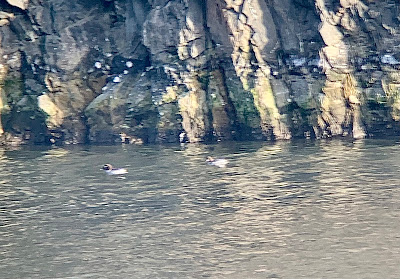I haven’t updated my apartment year list here since April 25th when I got to 75 species. Since I reached my goal of 100 species on August 8 I thought it was time for an update. I always hoped the 100th species would be a good one. It turned out to be one of the best of the year - an Eastern Screech-Owl calling from the tree outside the bathroom window at 4:10 am! The species I have added and the date I got them follow (in order) since my last post in April are below. The full list can be found here.
76. Warbling Vireo - May 2
77. Gray Catbird - May 2
78. Baltimore Oriole - May 2
79. Northern Waterthrush - May 2
80. Common Yellowthroat - May 2
81. Snowy Egret - May 5
82. Barn Swallow - May 5
83. Marsh Wren - May 5
84. Orchard Oriole - May 5
85. Lincoln’s Sparrow - May 6
86. Brant - May 11
87. Red-eyed Vireo - May 11
88. Yellow Warbler - May 11
89. American Redstart - May 12
90. Eastern Kingbird - May 13
91. Semipalmated Sandpiper - May 16
92. American Bittern - May 16
93. Willow Flycatcher - May 26
94. Green Heron - June 1
95. Tree Swallow - June 2
96. Common Nighthawk - June 4
97. Laughing Gull - June 24
98. Killdeer - July 28
99. Least Sandpiper - July 31
100. Eastern Screech-Owl - August 8


